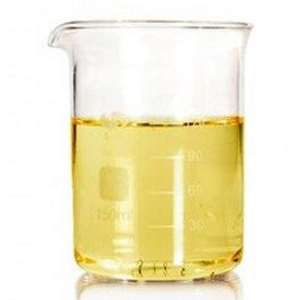
Polyoxyethylene 20 Sorbitan Mono-oleate
Ph Eur
Action and use: Non-ionic surfactants.
DEFINITION
Mixture of partial esters of fatty acids, mainly Oleic acid (0799), with sorbitol and its anhydrides ethoxylated with approximately 20 moles of ethylene oxide for each mole of sorbitol and sorbitol anhydrides.
CHARACTERS
Appearance: Oily, yellowish or brownish-yellow, clear or slightly opalescent liquid.
Solubility: Dispersible in water, in anhydrous ethanol, in ethyl acetate and in methanol, practically insoluble in fatty oils and in liquid paraffin.
Relative density: About 1.10.
Viscosity: About 400 mPa·s at 25C.
IDENTIFICATION
First identification A, D.
Second identification B, C, D, E.
A. Infrared absorption spectrophotometry.
B. Hydroxyl value (see Tests).
C. Saponification value (see Tests).
D. Composition of fatty acids.
E. Dissolve 0.1 g in 5 ml of methylene chloride R. Add 0.1 g of potassium thiocyanate R and 0.1 g of cobalt nitrate R. Stir with a glass rod. The solution becomes blue.
TESTS
Acid value: Maximum 2.0.
Hydroxyl value: 65 to 80.
Peroxide value: Maximum 10.0.
Saponification value: 45 to 55, determined on 4.0 g.
Composition of fatty acids: To pass the test.
Ethylene oxide and dioxan: Maximum 1 ppm of ethylene oxide and maximum 10 ppm of dioxan.
Heavy metals: Maximum 10 ppm.
Water: Maximum 3.0 per cent, determined on 1.00 g.
Total ash: Maximum 0.25 per cent, determined on 2.0 g.
Sorbitan, mono-9-octadecenoate, poly(oxy-1,2-ethanediyl) derivs., (Z)-.
Polyoxyethylene 20 sorbitan monooleate [9005-65-6].
Polysorbate 80 is an oleate ester of sorbitol and its anhydrides copolymerized with approximately 20 moles of ethylene oxide for each mole of sorbitol and sorbitol anhydrides.
Identification—
A: To 5 mL of a solution (1 in 20) add 5 mL of sodium hydroxide. Boil for a few minutes, cool, and acidify with 3 N hydrochloric acid: the solution is strongly opalescent.
B: To 2 mL of a solution (1 in 20) add 0.5 mL of bromine dropwise: the bromine is decolorized.
C: A mixture of 60 volumes of it and 40 volumes of water yields a gelatinous mass at normal and lower than normal room temperatures.
Specific gravity: between 1.06 and 1.09.
Viscosity: between 300 and 500 centistokes when determined at 25C.
Acid value: Weigh 10.0 g into a wide-mouth, 250-mL conical flask, and add 50 mL of neutralized alcohol. Heat on a steam bath nearly to boiling, shaking thoroughly occasionally while heating. Invert a beaker over the mouth of the flask, cool under running water, add 5 drops of phenolphthalein and titrate with 0.1 N sodium hydroxide: not more than 4 mL of 0.100 N sodium hydroxide is required, corresponding to an acid value of 2.2.
Hydroxyl value: between 65 and 80.
Saponification value: between 45 and 55.
Water: not more than 3.0%.
Residue on ignition: not more than 0.25%.
Heavy metals: 0.001%.
Polyoxyethylene (20) Sorbitan Monooleate; Sorbitan Mono-
9-octadecenoate; Poly(oxy-1,2-ethanediyl) Derivative
INS: 433 CAS: [9005-65-6]
DESCRIPTION
Polysorbate 80 occurs as a yellow to orange colored, oily liquid. It is a mixture of oleate partial esters of sorbitol and sorbitol anhydrides condensed with approximately 20 moles of ethylene oxide (C2H4O) for each mole of sorbitol and its mono- and dianhydrides. It is very soluble in water, producing a nearly colorless solution, and it is soluble in alcohol, in fixed oils, in ethyl acetate, and in toluene. It is insoluble in mineral oil.
Function: Emulsifier; stabilizer.
REQUIREMENTS
Identification
A. Add 5 mL of 1 N sodium hydroxide to 5 mL of a 1:20 aqueous solution, boil for a few minutes, cool, and acidify with 2.7 N hydrochloric acid. The solution is strongly opalescent.
B. Add bromine dropwise, to a 1:20 aqueous solution. The bromine is decolorized.
C. A 60:40 (v/v) mixture of Polysorbate 80:water at 25C or below yields a gelatinous mass.
Assay for Oxyethylene Content: Not less than 65.0% and not more than 69.5% of oxyethylene groups (—C2H4O—), equivalent to between 96.5% and 103.5% of Polysorbate 80, calculated on the anhydrous basis.
Acid Value: Not more than 2.
1,4-Dioxane: Not more than 10 mg/kg.
Hydroxyl Value: Between 65 and 80.
Lead: Not more than 2 mg/kg.
Oleic Acid: Between 22 and 24 g per 100 g of sample.
Residue on Ignition: Not more than 0.25%.
Saponification Value: Between 45 and 55.
Water: Not more than 3.0%.